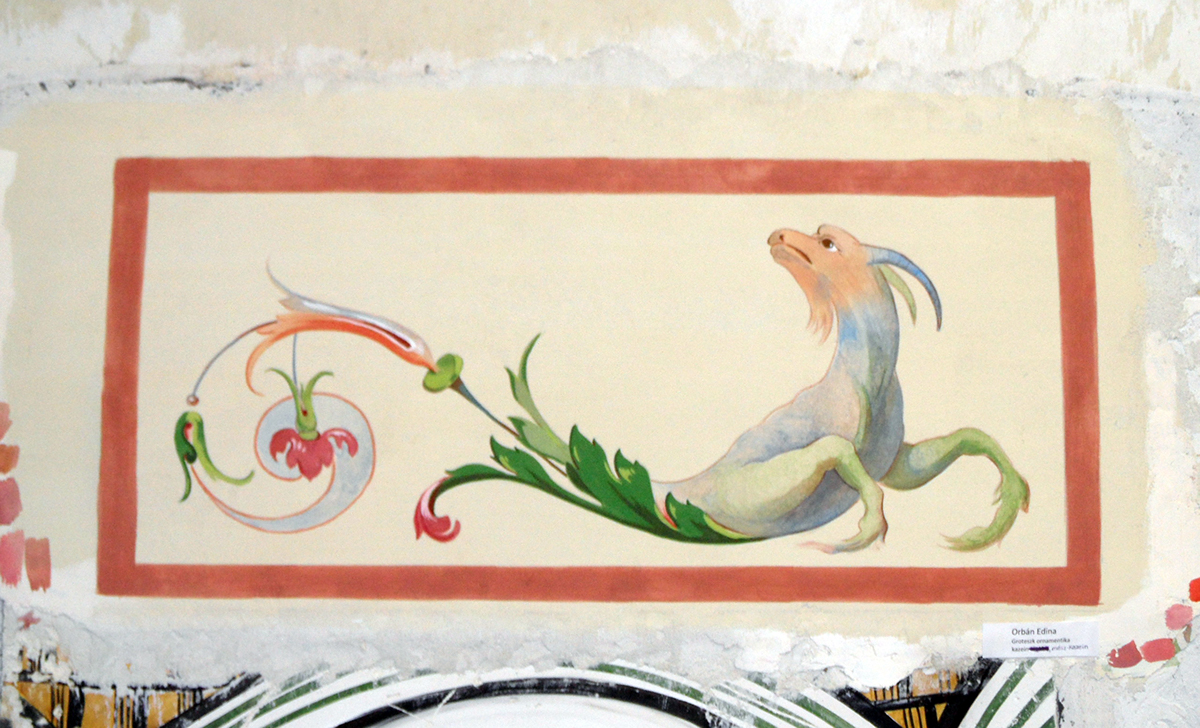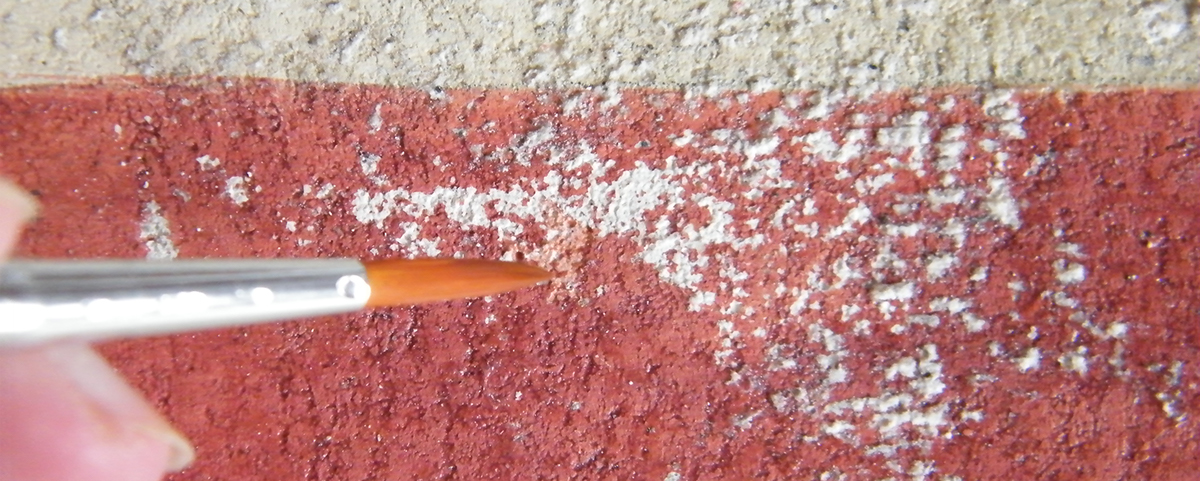Grotesque ornament
lime casein

The process of detachment (Stacco technique)
Fixation: I fixed the painting four times – sprayed with 1-2% casein.
Agglutination: To preserve the painted surface, as first and second step I put up 15x20 cm sized, one-layered tissues with a 10% solution of Poli(vinil)-butiral in alcohol. The tissues covered each other on about a 4-5 cm zone. As third agglutination layer I used 20x20 cm-sized gauzes with 20% PVB-solution. The gauzes covered each other on a 5-6 cm zone.
Preparing for the detachment of the secco, I ditched the plaster around the painting’s edge in a 4 cm line.
After I chose a suitable board, I stick and stabilized it to the secco with the help of polyurethane adhesive and pegs.
Detachment: It followed the drying of the polyurethane. It was a slow, very (very) long procedure until the lime plaster finally separated from the lower plaster layers and the desk+polyurethan+secco could be easily detached.

The detachment was followed by the wasting of the back side of the secco. After that I consolidated the friable plaster with a mixture of low fat milk and a few percent NH4OH. On those parts where the plaster was damaged to the painted surface, I used eurocryl, gauze and casein to refill the holes. The next step was to cover the back side with casein.



After I strengthened the plaster, I removed the poliurethan and the board mechanically. The agglutinated layers on the painted side had been taken away with the use of anhydrous alcohol – with a 24 hour humidify poultice method.

Retouching: In the course of retouching I used aquarel.





